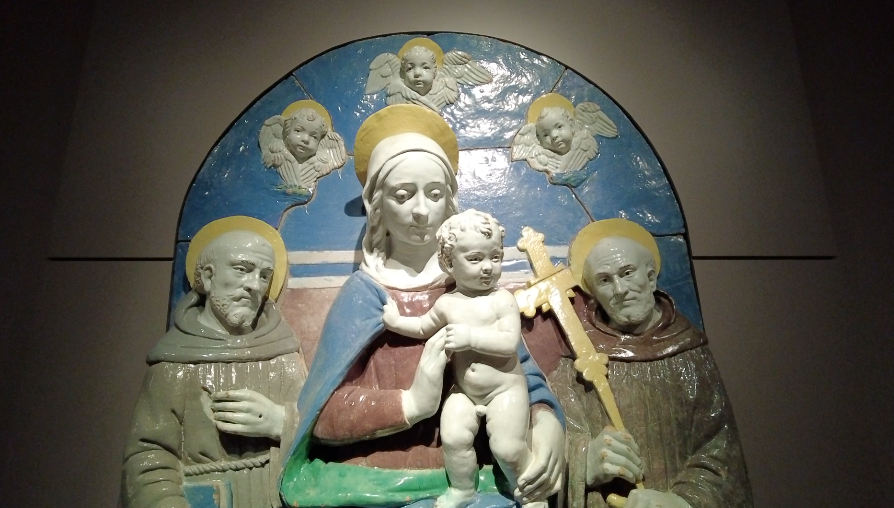CLEVELAND — Is a piece of art stolen from a village in Italy and lost for more than a century hiding in plain sight right here in Northeast Ohio?
It's a question that sparked an inquiry within the Italian Senate and has prompted a closer look at a piece of work on display at the Cleveland Museum of Art.
Benedetto Buglioni's "Virgin with Child Enthroned with Saints Francis and Giovanni Gualberto" stands nearly 6 feet tall and can be found in the museum's Italian Renaissance exhibit.

Research done by the museum highlights how Cleveland Museum of Art founder Jeptha Homer Wade II bought the piece in 1921 after it was previously owned by a German art dealer from 1911 to 1914 and confiscated by the French government.
Before then, the whereabouts of this 16th-century glazed terracotta altarpiece remained a bit of a mystery.
Victor Veronesi, an art historian based in Milan, notified News 5 about Buglioni's work after published reports brought renewed attention to the piece and its possible past.
As Veronesi points out, the artwork bears quite the resemblance to a piece listed in Italy’s database of illegally stolen cultural assets, run by the Carabinieri, one of Italy's main law enforcement agencies.
Newspaper articles from 1905 highlight how the altarpiece in the photo below was stolen one night from a chapel in Ponte Agli Stolli, a village in Tucsany known as Figline Valdarno which is less than an hour south of Florence.

"It was illegally taken," Veronesi said. "You cannot deny it. It's impossible not to say that this work was the one of Ponte Agli Stolli. It was the heart of Ponte Agli Stolli."
Veresoni told News 5 that this potential situation is not unique to centuries-old artifacts.
"It's very common, not [just with pieces] inside American museums, but also worldwide," he added.

This Virgin Mary attracted the attention of Italian Senator Margherita Corrado, who has repeatedly asked why Italy and its Ministry of Culture won’t claim the artifact.
In a statement to News 5 translated to English, the senator said in part she’s asking for a closer look at the historical evidence surrounding the piece.
“The goal is to achieve the result that the Figline community has been waiting for for over a century, namely the return of the [altarpiece] to Italy,” she said in a translated statement.

A closer look at the two pieces of art shows they are quite similar, but not the same. For instance, Madonna’s face is looking down at the Infant Jesus in the sculpture on display, while her face is looking more outward in historical photos.
A difference Veronesi said can be easily explained given it's not uncommon for art to be tweaked or updated over the years.
"The artwork was altered," he said. "That was inserted probably by [a former owner of the piece] to sort of change the complete format of the art."

In an email to News 5, a spokesperson with the Cleveland Museum of Art said they typically do not make public statements on the status of claims over pieces in their collection.
"The Cleveland Museum of Art (CMA) reviews claims to objects in the collection carefully and responsibly," a spokesperson said. "As a matter of policy, the CMA does not discuss publicly whether a claim has even been made. The CMA believes that public discussion before a resolution is reached detracts from the free and open dialogue between the relevant parties that leads to the best result for all concerned."
A later statement clarified their position, adding, "The museum has had cordial relationships with the Italian authorities and has no indication that this is a pending issue for them.”
"It was and still be a great loss for the people of Ponte Agli Stolli," Veronesi added.






